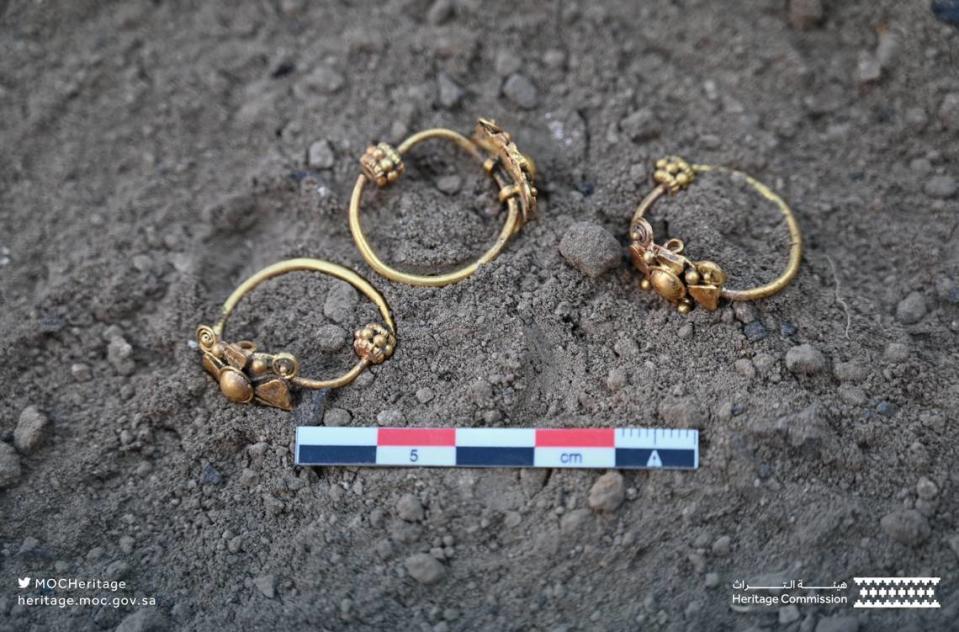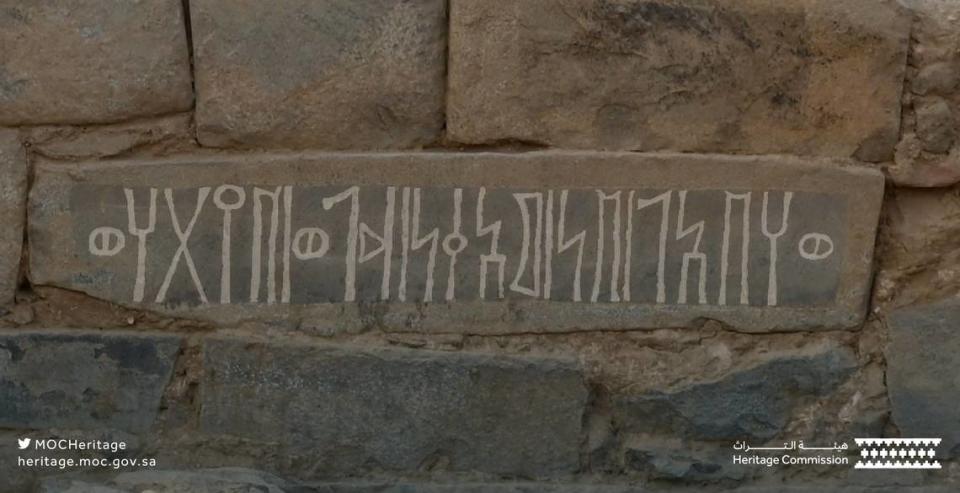‘Rare’ golden treasures unearthed at 2,000-year-old city in Saudi Arabia. Take a look
Bustling with life, people crowded the streets of an ancient city in Saudi Arabia. Traders, merchants and craftsmen filled the market with their wares, while farmers sold their latest harvest. A courier worked his way through the city, making deliveries, while others in gold jewelry perused the stalls.
The once-vibrant scene faded into the dusty ruins of Al-Ukhdud, fragments of its inhabitants beneath the desert sands.
Archaeologists excavating the Al-Ukhdud site unearthed some “rare” treasures dating to pre-Islamic times, the Saudi Heritage Commission said in a Feb. 15 news release.
Three golden rings were uncovered at the site, photos show. The rings were similar in size and design, each one topped with a butterfly-like decoration and a small lock to connect the loop.

Researchers also found a “unique” inscription carved into a stone about 7 feet long, the release said. The inscription was written in musnad, an ancient South Arabian script used in pre-Islamic times, according to the Encyclopaedia of Islam.
The stone belonged to a local inhabitant, with the writing describing his work carrying and delivering water, archaeologists said.

Excavations also uncovered a bronze bull’s head, the release said. This was a common symbol of strength and fertility among pre-Islamic people in the region. Photos show the red cow head.

The Al-Ukdud archaeological site, sometimes referred to as Al-Okdood, lies in southern Saudi Arabia near the city of Najran, Al Arabiya reported in 2018. Inhabitants of the 2,000-year-old city are referred to as the “People of the Groove.”
The city flourished from around 600 B.C. until about 300 A.D., according to Najran University. Excavation of the abandoned ruins has uncovered multiple buildings, a castle, pottery and numerous stone inscriptions.
Najran is along the border of Saudi Arabia and Yemen, about 500 miles southeast of Mecca.
Google Translate was used to translate news releases from the Saudi Heritage Commission and articles from Al Arabiya and Narjan University.
Antler ‘forgotten’ in museum storage was rare 2,000-year-old instrument, experts say
Vibrant chambers of 3,400-year-old Egyptian sanctuary to sun god now open. See inside
‘Revered’ temple was long lost in the sands of Iraqi desert — until now, photos show

